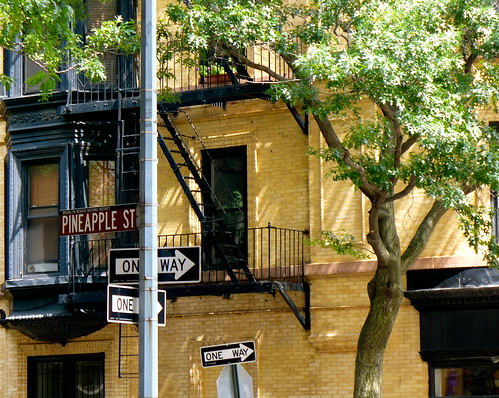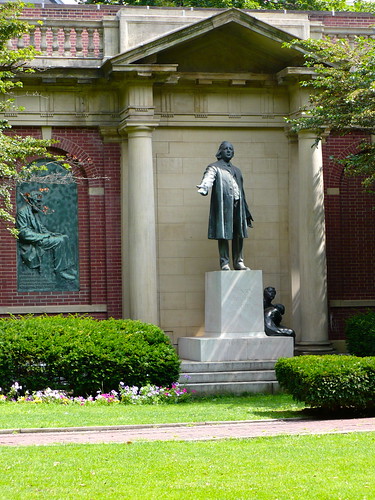The visit began at the Clark Street subway stop in Brooklyn Heights. One of the first things I noticed is that a few of the streets have fruit names, apparently because lots of fruit used to be delivered to warehouses here. Here is Pineapple Street, with buildings of a suitable color.

A little bit north of that, between Orange and Cranberry Streets, was where the history lesson began. This was at Plymouth Church, where the famous 19th century abolitionist preacher, Henry Ward Beecher, used to take to the pulpit to speak out against slavery.

That's his statue, and to the left of him, an engraving of Lincoln, who prayed a couple of times at the church. In addition to serving as a platform for abolitionist preaching, the church was also a station on the Underground Railroad, the series of homes and other potential hiding spots that runaway slaves used to escape north.
Even in NY they weren't safe. Although slavery was abolished in NY state by 1827 and other northern states had also struck down slavery, southern slaveowners still had a claim to the escaped slaves. Northerners were obligated by law to hand them back over or risk getting fine or going to jail. There were also bounty hunters or slave catchers who actively pursued escaped slaves (and sometimes, if they didn't find who they were looking for, would capture a freeborn person who fit the description more or less). Runaway slaves generally tried to make it to Canada.
